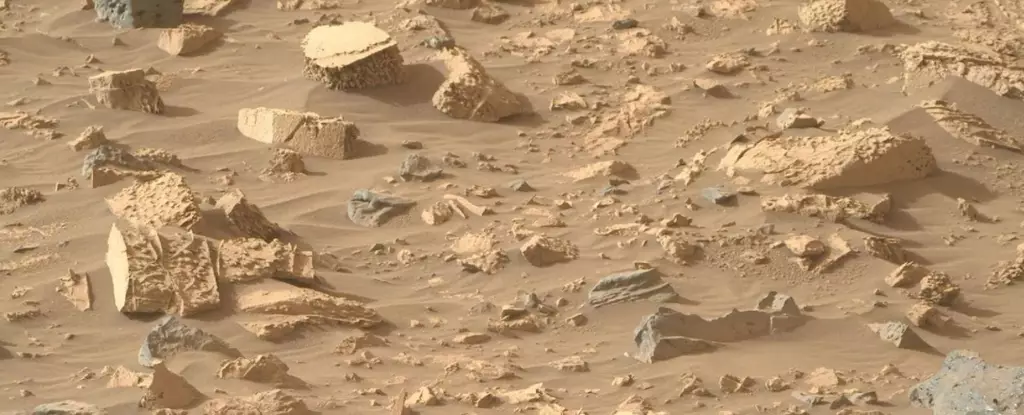NASA’s Perseverance Rover has recently departed from Mount Washburn and has reached its latest location, Bright Angel. The rover has encountered an unusual type of rock formation, dubbed ‘popcorn rock’ by scientists, which serves as further evidence of the presence of water in the Jezero Crater. This location is crucial for Perseverance’s mission, which revolves around uncovering signs of ancient life on Mars. In addition to searching for fossilized remnants of past life, the rover is also investigating the conditions that could have supported life. The choice of Jezero Crater as the exploration site was deliberate, given its status as an ancient paleolake with a delta composed of sediments and various geologically intriguing features.
Upon reaching Bright Angel on Sol 1175 of its mission, Perseverance encountered a region of scientific significance. The area is part of the river channel that fed into Jezero Crater and is characterized by light-toned rocky outcrops, believed to be either ancient sediments from the channel or older rocks exposed by the river’s activity. While progressing towards Bright Angel, the rover encountered a challenging terrain consisting of a dense field of large boulders that forced mission operators to alter the initial course. This obstacle significantly slowed down Perseverance’s progress, leading to frustrations among the team.
Unique Travel Modes
Perseverance employs two primary modes of travel to navigate the Martian terrain effectively. In rough or intricate landscapes, the route planning team relies on images to chart the rover’s path in increments of around 30 meters. For longer journeys within a single sol, Perseverance switches to its autopilot mode, known as AutoNav. However, as the rover traversed the boulder field en route to Bright Angel, even AutoNav faced challenges and at times came to a halt. This circumstance prompted the team to reroute Perseverance through a dune field and across the river channel, shortening the overall journey by several weeks.
Mesmerizing Discoveries
Upon arriving at Bright Angel, Perseverance unveiled a fascinating array of rocks that intrigued geologists. Some of the rocks exhibited a concentration of spherical structures, earning them the moniker ‘popcorn rocks.’ Moreover, these formations displayed ridges resembling mineral veins, which typically form when water transports minerals through rock and leaves deposits behind. The prevalence of these features implied the past flow of water through the rocks, aligning with the quest to unravel Mars’ aqueous history. The upcoming steps involve analyzing the mineral composition of these popcorn rocks, with Perseverance set to ascend Bright Angel while conducting measurements and utilizing its instruments for closer examination.
In the upcoming phase of its mission, Perseverance will continue its exploration of Bright Angel, utilizing its equipment to delve deeper into the chemical composition of the rocks. The rover will employ its abrasion tool and the SuperCam suite to extract samples for further analysis. Based on the insights gleaned from these examinations, decisions will be made regarding the collection of samples for potential return to Earth. Once the investigations at Bright Angel are concluded, the rover will proceed southwards, crossing the Neretva Vallis towards its next destination, Serpentine Rapids.
By pushing through challenges and uncovering remarkable findings, NASA’s Perseverance Rover continues to deepen our understanding of Mars’ geological history and the potential for past life on the Red Planet.


Leave a Reply